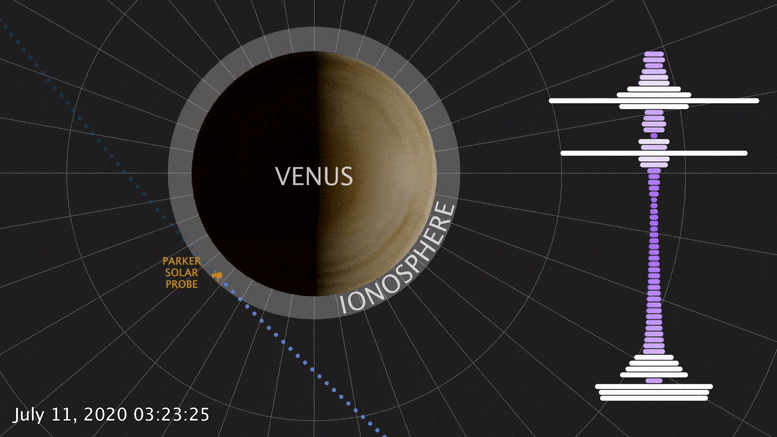During a brief swing by Venus, NASA ’s Parker Solar Probe detected a natural radio signal that revealed the spacecraft had flown through the planet’s upper atmosphere. This was the first direct measurement of the Venusian atmosphere in nearly 30 years — and it looks quite different from Venus past. A study published today confirms that Venus’ upper atmosphere undergoes puzzling changes over a solar cycle, the Sun’s 11-year activity cycle. This marks the latest clue to untangling how and why Venus and Earth are so different.
Born of similar processes, Earth and Venus are twins: both rocky, and of similar size and structure. But their paths diverged from birth. Venus lacks a magnetic field, and its surface broils at temperatures hot enough to melt lead. At most, spacecraft have only ever survived a couple hours there. Studying Venus, inhospitable as it is, helps scientists understand how these twins have evolved, and what makes Earth-like planets habitable or not.
On July 11, 2020, Parker Solar Probe swung by Venus in its third flyby. Each flyby is designed to leverage the planet’s gravity to fly the spacecraft closer and closer to the Sun. The mission — managed by Johns Hopkins Applied Physics Laboratory in Laurel, Maryland — made its closest flyby of Venus yet, passing just 517 miles (833 km) above the surface.
